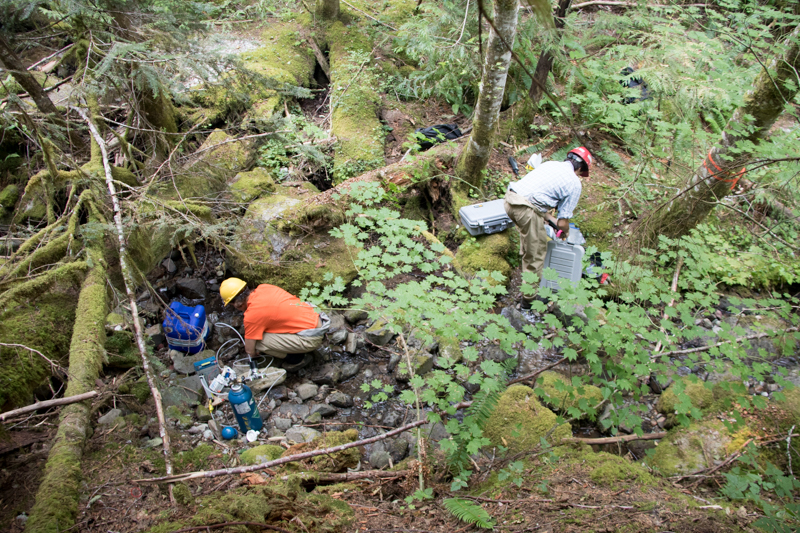Forests and streams are inextricably linked in our western Oregon landscapes, so the significant changes to the forest resulting from the fire will inevitably affect the streams. As research from Mack Creek in the Andrews Forest has demonstrated, wood input from the forest fundamentally shapes the geomorphology and habitat of streams. In McRae Creek, OSU professor Dana Warren and his team have been exploring how the riparian forest canopy impacts light on streams which, in turn, affects ecological processes in those streams. They initially looked at how historic timber management affected light availability in streams and the impact of that light availability on nutrient limitation and aquatic primary production. They also created an experimental canopy gap over the stream in one of the tributaries to McRae Creek and quantified how fish, invertebrates, temperature, primary production and nutrients changed with the creation of a light patch. The impacts of the Lookout Fire will far exceed the impacts of the experimental small gap and will re-open canopies in areas of past clear-cuts that had regenerated to dense stands of alder and fir. In the coming years we will learn about the resilience of streams to the loss of riparian forests and how ecosystem processes and aquatic biota respond to loss of forest canopy cover and changes in stream hydrology following fire. See our online album: images of the gap study in 2017.
First posted September 20, 2023

